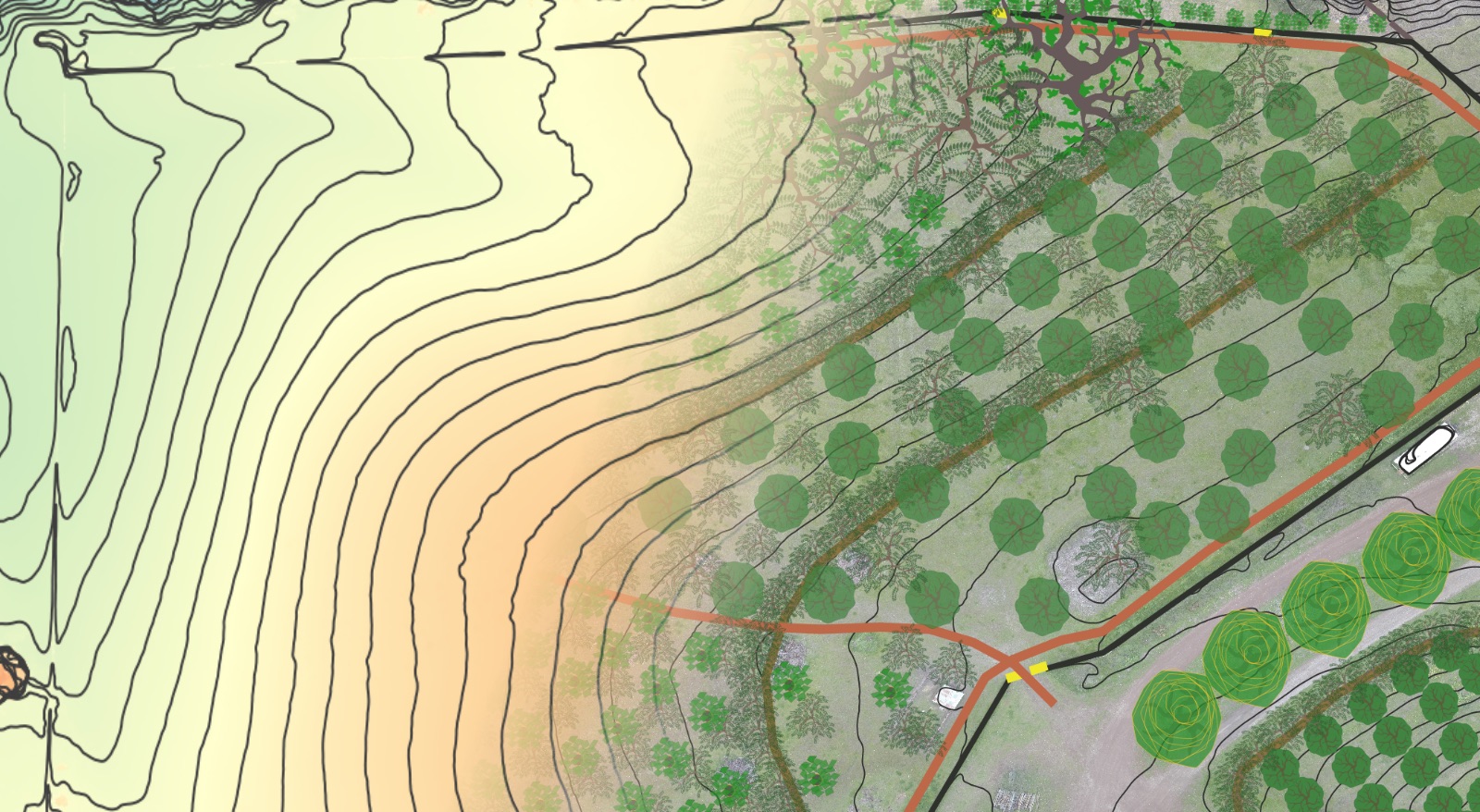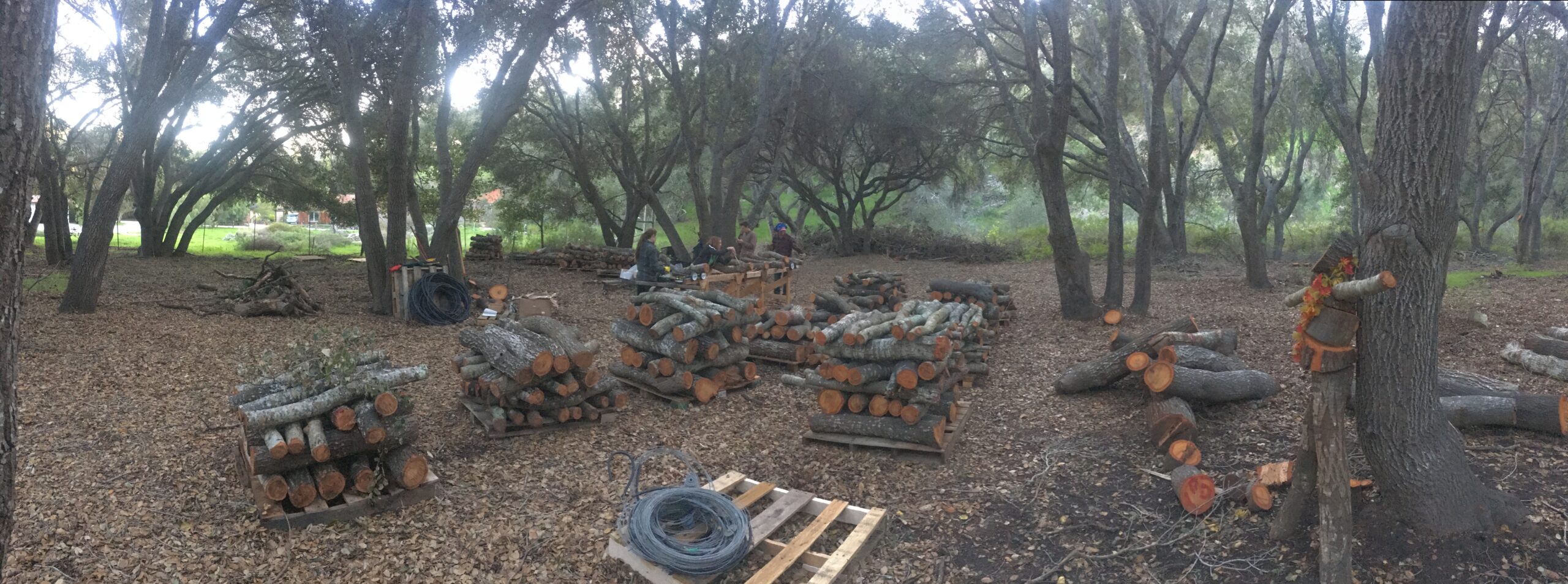Welcome to the…
Living Systems – Food Production Series
This series of posts details different food production systems and the relevant design and management criteria that accompany their establishment and operation. These primers are meant to provide a broad overview of each system and serve as a jumping off point for further research specific to your context. Remember, context is everything – start with small and intensively managed systems that you monitor closely before expanding to larger and more extensive systems. No matter your context, there is an appropriate system for you to increase your food sovereignty. OK, let’s grow!
- Agroforestry
- Forest Farming
Log-based Mushroom Culture
Preparing Logs
Mushrooms can be grown on freshly cut, inoculated logs within a natural woodland setting. Logs are recommended to be cut in late winter to early spring and inoculated shortly thereafter. There are many methods to inoculate logs, some of which work better for different types of culinary or medicinal mushrooms. In general, logs should be 4-8” wide and approximately 42” long at the longest (for ease of handling).
Inoculation & Mycelial Expansion
A very common method is to drill each log with 30 – 50 uniform depth holes using an angle grinder and a specially-designed bit and fill those holes with either sawdust or plug spawn. Spawn is either packed into the holes using a palm inoculator when using sawdust spawn or hammered in with pre-inoculated wooden plugs. Each hole is then sealed with wax and the logs are stacked to allow the mycelium to colonize the entire log, during which time the moisture content of the logs needs to be maintained around 35%. This process typically takes about 8 months to a year for most culinary and medicinal varieties, some faster (like Oyster Mushrooms) and some slower (Reishi, Lion’s Mane).
Fruiting
Once colonized, the logs are ready to fruit. Fruiting can be induced, as is common practice with shiitake, by soaking the log in a tub or giving it a long, slow steady misting, or the logs can be allowed to fruit naturally, varying their production with seasonal temperature and moisture levels.
Logs can be laid out in A-frame fruiting lines, set into sand-filled trenches vertically (helpful in places that can experience droughty spells – logs will wick up moisture through the sand), lain just below the soil horizon and covered with soil and leaves in raft beds or stacked in numerous orientations for harvest. If only sloping land is available, the Japanese method of crib stacking logs on hillsides is an effective way to make use of sloping ground. These types of log stacks are typically used when logs have already colonized and are ready to be fruited, and are more often found in natural fruiting systems (letting the logs fruit according to natural cycles) rather than forced fruiting systems (commercial production).
Totem log inoculation is another style of log inoculation, typically used for larger diameter logs (8” and larger), whereby 30” long logs are sliced into cross sections, each 10-12” in height, sawdust spawn is packed in between the cross sections, which are then re-attached to one another using screws or metal straps. This method is preferred for species like Lion’s Mane.
Laying Yard
The laying yard is where the logs will live out their productive lives. It should be in a location where it can be easily observed on a daily basis, as mushrooms can go from small pins to full size within 24 hours, and then degrade rapidly in condition after that. The location should be shaded year round and be protected from heavy winds to decrease evaporative stress on the logs. Laying yards can be fenced to keep out deer and other critters that love to enjoy fresh mushrooms.
Livestock Integration
Ducks have been demonstrated to have a beneficial working relationship with log-based mushroom production systems. If the ducks are excluded from the actual laying yard so they don’t damage the mushrooms, they will patrol the perimeter and dramatically reduce slug pressure on the newly pinning mushrooms, increasing harvestable yields and turning slugs into eggs and duck meat. See Integrating Ducks Into Log-Grown Shiitake Mushroom Production For Slug Control And Increased Yields SARE study by Steve Gabriel and Elizabeth Falk.





